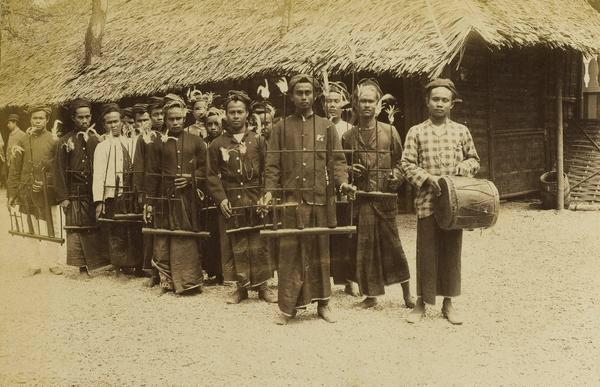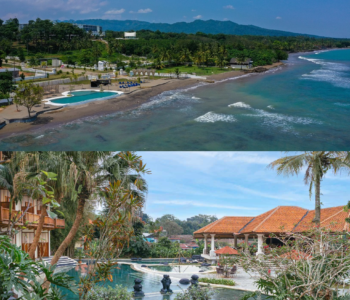Celebrating Javanese influence that was present in Paris in 1889, the Impressions Universelles Concert fuses two great cultures together in an enchanting musical performance.

Javanese influence in France dates back to 1889, when the first landmark of entertainment in France was formally inaugurated. The Exposition Universelle, famously known as the Paris International Exposition, portrayed the complete representation of the world, including the commencement of the Eiffel tower, the Grand Palais and factories, growing machineries, natural and synthetic silk and textiles and the rebirth of the harpsichord made by Pleyel and Erard piano makers. In addition, Exposition Universelle a pioneer of international exhibition, but the expo also served as a starting point for cultural designations, particularly to promote Le Kampong Javanais, an authentic traditional Javanese village in France. Recognised as the product of human civilisation, this kampong made of authentic bamboo houses on stilts is inhabited by 65 Indonesians from a wide range of regions. These people served tea from the Dutch plantations, cooked sumptuous spicy delights, created refined batik and sewed straw hats that surprisingly become a fashion trend, and above all, certainly the most extraordinary and compelling event of the world exhibition in the 19th century—enchanting dances accompanied by the magic of the sounds of gamelan!

The euphoria of success of the world exhibition was celebrated by the magical performance of gamelan ensemble invited by the Dutch Committee Head Dhr. Cores de Vries. The sounds of gamelan were played by Sundanese musicians who came from the tea plantation of Sinagar and Parakansalak, Sumedang, the hilly region of western Java. Together with the gamelan musicians, Prince of Mangkunegara from the Palace of Solo, Central Java, sent along four young dancers, aged between 12 to 16.
This impressive display caught the attention of many renowned artists, poets, writers, painters, choreographers and musicians from around the globe. Among them, the young Claude Debussy (1862-1918) was favourably enchanted by the sounds of gamelan. Fascinated by the sounds and colours of gamelan, the rhythmical patterns, the scales and modes, the interlocking figures, and the beauty of the melodic cycles with continually harmonic pattern inspired him to hone his music and composing skills beyond academic standards that he had studied at the Conservatoire de Musique de Paris. The impact on Western arts and music and Debussy has since absolutely changed the course of music history and opened the doors widely to the contemporary era of the 20th century.

The gala night Impressions Universelles at Aula Simfonia Jakarta on 11 May commemorated the 130th anniversary of the Eiffel Tower, the 1889 Paris World Fair, and the Kampong Javanais. The music of Debussy was presented by conductor Gabriel Laufer in collaboration with Jakarta Simfonia Orchestra and Jakarta Oratorio Society conducted by Eunice Tong, all together with musicians from Gamelan Sarioneng Parakansalak (1825) Sumedang and a group of dancers from the Sanggar Tari Darma Giri Budaya, Wonogiri. The sounds of suling, kecapi, rebab, angklung were presented by Gamelan Sarioneng Parakansalak (1825) played by the Sanggar Lingkung Seni Dangiang Kutamaya of Sumedang led by Dedy Hernawan. Sanggar Tari Darma Giri Budaya performed the dances choreographed by Loediro Pantjoko.

Javanese influence in France dates back to 1889, when the first landmark of entertainment in France was formally inaugurated. The Exposition Universelle, famously known as the Paris International Exposition, portrayed the complete representation of the world, including the commencement of the Eiffel tower, the Grand Palais and factories, growing machineries, natural and synthetic silk and textiles and the rebirth of the harpsichord made by Pleyel and Erard piano makers. In addition, Exposition Universelle a pioneer of international exhibition, but the expo also served as a starting point for cultural designations, particularly to promote Le Kampong Javanais, an authentic traditional Javanese village in France. Recognised as the product of human civilisation, this kampong made of authentic bamboo houses on stilts is inhabited by 65 Indonesians from a wide range of regions. These people served tea from the Dutch plantations, cooked sumptuous spicy delights, created refined batik and sewed straw hats that surprisingly become a fashion trend, and above all, certainly the most extraordinary and compelling event of the world exhibition in the 19th century—enchanting dances accompanied by the magic of the sounds of gamelan!







